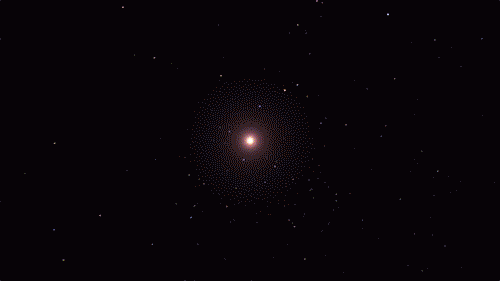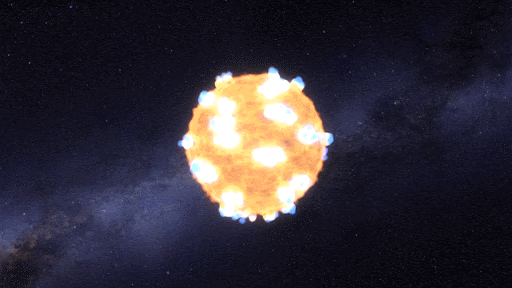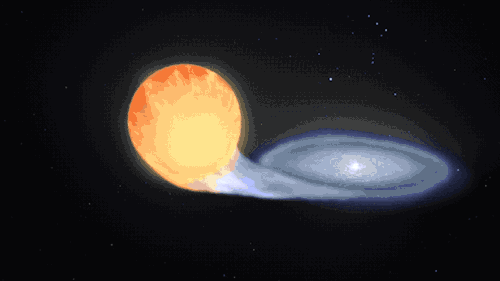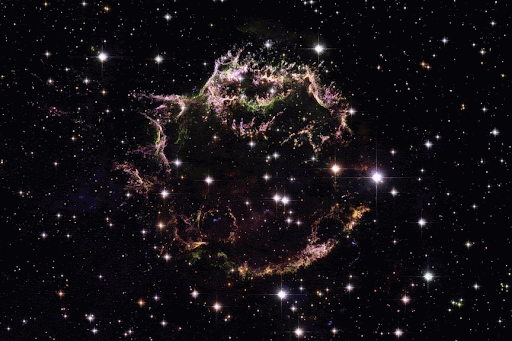Here’s Are Some Websites To Explore.
Here’s are some Websites to Explore.
These websites could change your life
I asked Kottke.org readers if they had ever seen, heard, or read something on the web that literally changed their lives.
Fourteen people said no. Sixteen said maybe. Thirty-eight people said yes. These are some of their answers. Everyone is anonymous. Some said more than others.
Four different people listed pages from Metafilter:
Ask MetaFilter
;Where’s My Cut? –: On Unpaid Emotional Labor
For the person who’s got everything: “I read this post, applied, and had a play made for me.”
[creepy filter] Is it normal to become this distracted from seeing an attractive person in public?: This reader pointed to a comment in this thread “that describes the grinding reality of daily low-grade sexual harassment.”
Five readers listed works of journalism.
The Lilly Suicides by Richard DeGrandpre.
The Overprotected Kid by Hanna Rosin “persuaded me to be a far less uptight parent.”
Is This Working? on discipline and punishment in the school system.
The Blissfully Slow World of Internet Newsletters. (I hope this person now does something with newsletters.)
Don’t report sexual harassment (in most cases) by Penelope Trunk.
Five listed personal essays or advice.
Ten Things I Have Learned by Milton Glaser [PDF]
Mindfulness in Plain English by Ven. Henepola Gunaratana.
Encountering the Gifted Self Again, For the First Time “made me realise that I’m not just a weirdo, but all of my "quirks” actually fit together under a label, and that has made me understand myself about 10000x better.“
Pixel Poppers: Awesome By Proxy: Addicted to Fake Achievement: "an essay on performance orientation vs. mastery orientation, as applied to videogame genres.”
DEAR SUGAR, The Rumpus Advice Column #77: The Truth That Lives There.
Five listed videos or video series.
“Almost any woodworking video by Matthias Wandel.”
Vsauce.
The School of Life
The power of vulnerability by Bren Brown.
Kid President’s Letter To A Person On Their First Day Here:
And ten listed entire websites.
“Josh Davis’s www.dreamless.org message board, now defunct.”
“Violet Blue’s writing, which lead to me realizing sex is a much deeper and more interesting topic than mainstream news coverage would have me believe.”
“The website MathPuzzle. It was the first time a website caught my attention and I corresponded with the owner/webmaster, and it opened me up to the online and offline community of puzzlers around the world. Working as a puzzle author got me through college and helped me establish a name for myself.”
Bullet Journal.
YearCompass.
“Jeph Jacques’s Questionable Content, particularly how he dealt with suicide, depression, and the concept of people from different backgrounds so elegantly. I like to think it increased (and continues to increase) my empathy in the world.”
National Novel Writing Month
“Radiolab made me want to be a journalist.”
l'Université du Québec à Chicoutimi: “In 2005 I was trying to get information on how to study abroad for a year. Everything I read was on the Internet, and I then spent 9 months between 2006 and 2007 in Chicoutimi, Quebec.”
Pixel Envy. “Not pandering. Started reading Kottke, DF, and Metafilter, and realized that I could try doing the same thing. I’ve had a modicum of success since, and met a bunch of really cool people as a result.”
Now pick up your instruments, and go start a band.
More Posts from Aspergers1044 and Others
Basic Argument for an Intellectual Revolution
See on Scoop.it - Philosophy everywhere everywhen
Here is an outline of the argument for the urgent need to bring about a revolution in the aims and methods of academic inquiry, its whole character and structure, so that it takes up its proper task of promoting wisdom rather than just acquiring knowledge. Academia as it exists today is the product of two past great intellectual revolutions. The first is the scientific revolution of the 16th and 17th centuries, associated with Galileo, Kepler, Descartes, Boyle, Newton and many others, which in effect created modern science. A method was discovered for the progressive acquisition of knowledge, the famous empirical method of science. The second revolution is that of the Enlightenment, especially the French Enlightenment, in the 18th century. Voltaire, Diderot, Condorcet and the other philosophes had the profoundly important idea that it might be possible to learn from scientific progress how to achieve social progress towards an enlightened world. They did not just have the idea: they did everything they could to put the idea into practice in their lives. They fought dictatorial power, superstition, and injustice with weapons no more lethal than those of argument and wit. They gave their support to the virtues of tolerance, openness to doubt, readiness to learn from criticism and from experience. Courageously and energetically they laboured to promote reason and enlightenment in personal and social life.
See on ucl.ac.uk
I sure could really use a Home_Computer with a 10 or 1,000 Core CPU and at least 8_GBs of Dual_Channel or Quad_Channel Random_Access Memory!
I would sure like to see something like The Hyperloop or Evacuated Tube Technology come to be a common form of Long-Distance Travel someday!

MIT Reveals its Version of Hyperloop Transit Pod
Tired of being stuck in traffic on the highway or waiting endlessly for a delayed subway? Almost three years ago, Elon Musk envisioned the Hyperloop, a new type of public transit that would whisk commuter-filled pods efficiently across hundreds of kilometers in a matter of minutes via tubes; and of course, only second to teleportation in terms of overall coolness.
Among a number of startups trying to get in on the competition sponsored by Musk’s company SpaceX, a student team from the Massachusetts Institute of Technology emerged earlier this year as the front-runner when it won the competition’s design phase. On Friday, MIT finally unveiled the prototype pod that it will test this summer at a 1-mile racetrack near SpaceX’s headquarters in Hawthorne, California.
Photograph by MIT
It's not quite warp drive, but researchers are hot on the trail of building nuclear fusion impulse engines, complete with real-life dilithium crystals. Read this article by Amanda Kooser on CNET.
Different Types of Supernovae are the Primary Origins of Different Classes of Chemical_Elements.
You Are Made of Stardust
Though the billions of people on Earth may come from different areas, we share a common heritage: we are all made of stardust! From the carbon in our DNA to the calcium in our bones, nearly all of the elements in our bodies were forged in the fiery hearts and death throes of stars.

The building blocks for humans, and even our planet, wouldn’t exist if it weren’t for stars. If we could rewind the universe back almost to the very beginning, we would just see a sea of hydrogen, helium, and a tiny bit of lithium.
The first generation of stars formed from this material. There’s so much heat and pressure in a star’s core that they can fuse atoms together, forming new elements. Our DNA is made up of carbon, hydrogen, oxygen, nitrogen, and phosphorus. All those elements (except hydrogen, which has existed since shortly after the big bang) are made by stars and released into the cosmos when the stars die.

Each star comes with a limited fuel supply. When a medium-mass star runs out of fuel, it will swell up and shrug off its outer layers. Only a small, hot core called a white dwarf is left behind. The star’s cast-off debris includes elements like carbon and nitrogen. It expands out into the cosmos, possibly destined to be recycled into later generations of stars and planets. New life may be born from the ashes of stars.

Massive stars are doomed to a more violent fate. For most of their lives, stars are balanced between the outward pressure created by nuclear fusion and the inward pull of gravity. When a massive star runs out of fuel and its nuclear processes die down, it completely throws the star out of balance. The result? An explosion!
Supernova explosions create such intense conditions that even more elements can form. The oxygen we breathe and essential minerals like magnesium and potassium are flung into space by these supernovas.

Supernovas can also occur another way in binary, or double-star, systems. When a white dwarf steals material from its companion, it can throw everything off balance too and lead to another kind of cataclysmic supernova. Our Nancy Grace Roman Space Telescope will study these stellar explosions to figure out what’s speeding up the universe’s expansion.
This kind of explosion creates calcium – the mineral we need most in our bodies – and trace minerals that we only need a little of, like zinc and manganese. It also produces iron, which is found in our blood and also makes up the bulk of our planet’s mass!

A supernova will either leave behind a black hole or a neutron star – the superdense core of an exploded star. When two neutron stars collide, it showers the cosmos in elements like silver, gold, iodine, uranium, and plutonium.

Some elements only come from stars indirectly. Cosmic rays are nuclei (the central parts of atoms) that have been boosted to high speed by the most energetic events in the universe. When they collide with atoms, the impact can break them apart, forming simpler elements. That’s how we get boron and beryllium – from breaking star-made atoms into smaller ones.
Half a dozen other elements are created by radioactive decay. Some elements are radioactive, which means their nuclei are unstable. They naturally break down to form simpler elements by emitting radiation and particles. That’s how we get elements like radium. The rest are made by humans in labs by slamming atoms of lighter elements together at super high speeds to form heavier ones. We can fuse together elements made by stars to create exotic, short-lived elements like seaborgium and einsteinium.

From some of the most cataclysmic events in the cosmos comes all of the beauty we see here on Earth. Life, and even our planet, wouldn’t have formed without them! But we still have lots of questions about these stellar factories.
In 2006, our Stardust spacecraft returned to Earth containing tiny particles of interstellar dust that originated in distant stars, light-years away – the first star dust to ever be collected from space and returned for study. You can help us identify and study the composition of these tiny, elusive particles through our Stardust@Home Citizen Science project.
Our upcoming Roman Space Telescope will help us learn more about how elements were created and distributed throughout galaxies, all while exploring many other cosmic questions. Learn more about the exciting science this mission will investigate on Twitter and Facebook.
Make sure to follow us on Tumblr for your regular dose of space!
Publishers are giving away Bestselling Books for Free!
Last year, Random House decided to give away Dan Brown’s bestselling novel, The Da Vinci Code, for free for one week. The eBook freebie ran on the 10-year anniversary of The Da Vinci Code, and a few weeks before the release of Brown’s new book, Inferno.
Why did Random House give away a...
Here’s what David Brin has to say about:
The Rise of The Internet.

Three planets with sizes and temperatures akin to those of the Earth and Venus are circling a dwarf star 40 light-years away. The star in question, named TRAPPIST-1 after the telescope used to observe it, is weaker and cooler than the Sun at the heart of our solar system. "With such short orbital
NASA’s Cassini_Mission to Saturn will be Retiring soon.
Future_Missions to Saturn will someday follow in its’ footsteps.

Cassini’s Retirement
What were you up to back in 1997? It was an exciting year. Titanic was setting box office records, Dolly the sheep was getting cloned, and the very first Harry Potter book was hitting shelves. It was also the year that a bus-sized NASA spacecraft named Cassini launched. Carrying the ESA Huygens probe, Cassini set off for Saturn to learn all about the lovely ringed planet.
After almost 20 years, Cassini is entering its last phase, building up to the “Grand Finale” that will culminate in September 2017 (if all goes well).
~ Scientific American
Also check out: https://saturn.jpl.nasa.gov/
The Search for Evidence of Space_Mining Operations in Other Solar_Systems.
-
 fantasymilieu liked this · 8 years ago
fantasymilieu liked this · 8 years ago -
 mage-cat reblogged this · 8 years ago
mage-cat reblogged this · 8 years ago -
 oddrowcenter liked this · 8 years ago
oddrowcenter liked this · 8 years ago -
 coromar liked this · 8 years ago
coromar liked this · 8 years ago -
 mimsysystem liked this · 8 years ago
mimsysystem liked this · 8 years ago -
 bruvu liked this · 8 years ago
bruvu liked this · 8 years ago -
 antoxic liked this · 8 years ago
antoxic liked this · 8 years ago -
 totalitarianvegetables liked this · 8 years ago
totalitarianvegetables liked this · 8 years ago -
 thewebmonkey liked this · 8 years ago
thewebmonkey liked this · 8 years ago -
 berlinde liked this · 8 years ago
berlinde liked this · 8 years ago -
 lardismysavior liked this · 8 years ago
lardismysavior liked this · 8 years ago -
 zombieslayer-werewolfdirectioner reblogged this · 8 years ago
zombieslayer-werewolfdirectioner reblogged this · 8 years ago -
 mage-cat liked this · 8 years ago
mage-cat liked this · 8 years ago -
 aspergers1044 reblogged this · 8 years ago
aspergers1044 reblogged this · 8 years ago -
 jkottke reblogged this · 8 years ago
jkottke reblogged this · 8 years ago
